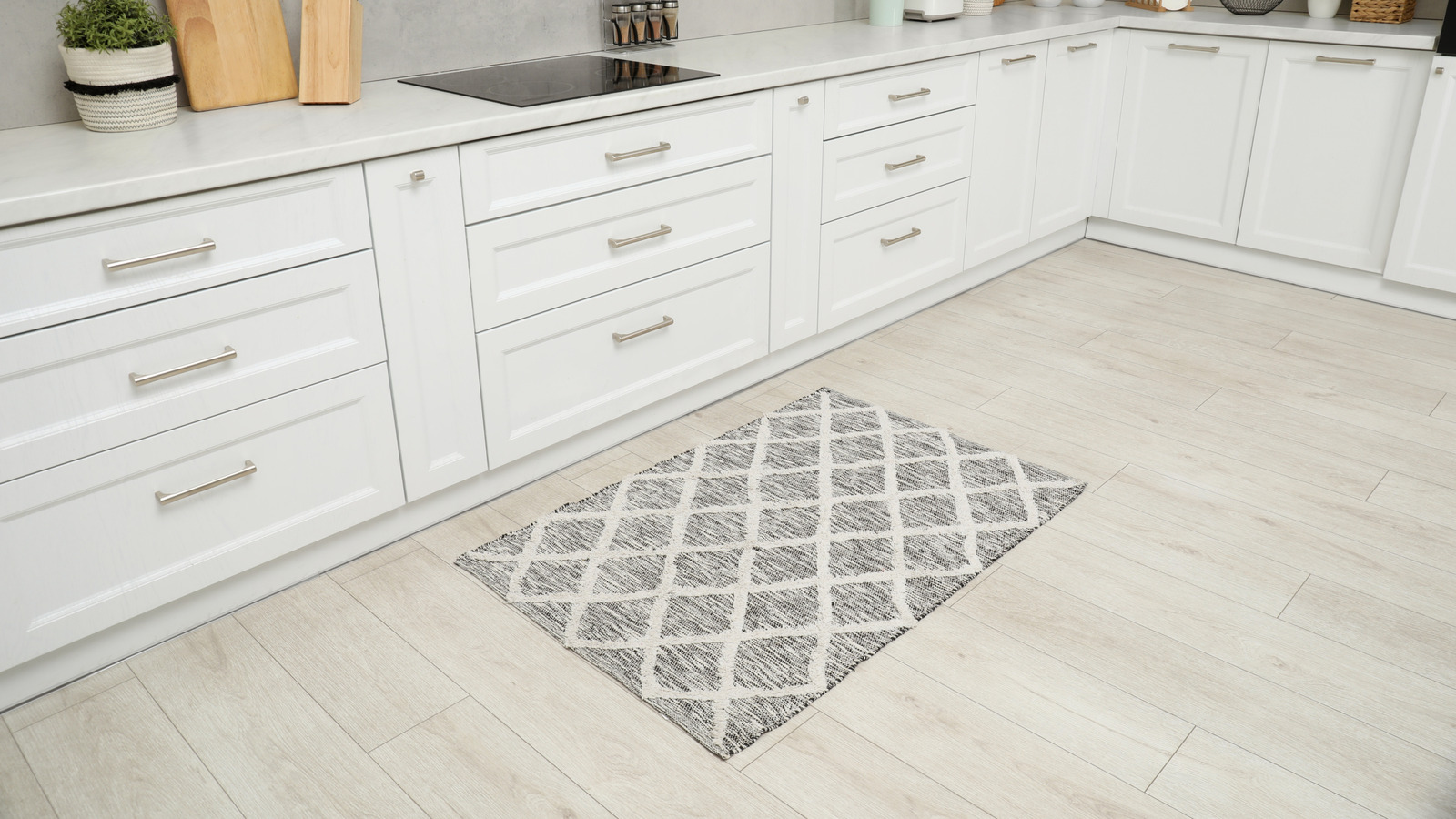
"A well-designed kitchen is all about cohesive lines. In the same way that kitchen backsplash parameters align with existing edges formed by the upper cabinets and countertops, any rugs on the floor should serve as a continuation of the existing lines formed by the room's organic layout. This means multiple small rugs are the visual villain. Some mats measuring 2 x 4 feet might make utilitarian sense in front of the sink and the stove, and maybe there's a runner somewhere in there, too. However, polka-dotting a kitchen floor with small rugs breaks up the lines, interrupting the aesthetic flow of the room. They can even choke a space out, making a kitchen appear smaller than it actually is."
"To remedy this, opt for one larger central rug. Whether this is a runner or a mid-size area rug depends on your unique space. In any room, a rug should complement and maximize the existing space. Cohesive spaces aim for unity, not division. Pro tip: Rugs with geometric patterns (e.g., thin lines and a large, not-too-busy design) naturally make a space appear larger."
Cohesive kitchen design relies on continuous lines created by cabinetry, countertops, and rugs. Multiple small rugs disrupt those lines and visually fragment the floor, which can make a kitchen feel smaller. One larger central rug — either a runner or a mid-size area rug depending on layout — preserves visual flow and complements the space. Geometric patterns with thin lines and a large, not-too-busy design can make the room appear larger, with darker geometrics suiting modern kitchens and muted, neutral stripes suiting traditional ones. Larger rugs require attention to sizing and durability; low-pile, braided jute is a durable, inviting option.
Read at Tasting Table
Unable to calculate read time
Collection
[
|
...
]